In the previous article, we learned about the concepts of “exposure”, “correct exposure” and “sensitivity latitude”. To get the correct exposure, evaluation must be done to determine how much exposure is required. In this article, let’s learn how to meter light. Different metering methods need to be used in different situations to allow us to get the correct exposure. At the same time, mastering the metering can allow us to better utilize the creativity of light and shadow, and shoot extraordinary works in ordinary scenes.
Table of Contents
Metering Mode
First, let’s understand the mode of camera metering.
Metering mode: Now SLR cameras and digital cameras basically have the following three metering modes:
1. Average metering:
The metering value is averaged over the entire framing area.
This is the default basic metering mode of general cameras, and the usage rate is the most common. In the case where the light is relatively uniform within the framing range and the contrast between light and dark is not large, you can almost get a satisfactory photo.
Figure 1. Cactus.
The scene at that time was very flat, and the color and light of the cactus in the framing area were relatively average. Using the average metering mode, you can get a photo with the correct exposure.
2. Center average metering.
The metering mode is based on the average metering of the area around 30% in the middle of the framing range.
When the subject to be represented is in the middle of the framing range, and there is a big difference between the ambient light and shade and the subject, choose the central average metering, and focus on metering most of the central area, which can make the subject’s exposure more accurate.
Figure 2. The Forbidden City.
The idea of this film is to use the foreground to highlight a sense of oppression and to express the majesty of the Forbidden City. When shooting, the light ratio of the main tower and the foreground is quite different. Using the center average metering mode, the overall metering is mainly based on the tower in the middle part of the framing, and the subject is properly exposed, and the foreground becomes a silhouette photo, which is in line with the conception goal. With average metering, the subject may be slightly overexposed, leaving too much detail in the shadows in the foreground, cluttering the frame.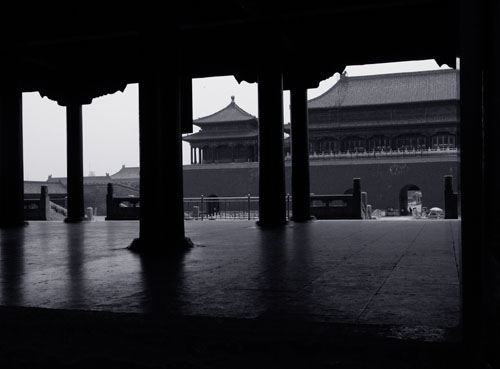
3. Spot metering.
Also known as spot metering, it is metering within the 1%-5% area of the framing range.
The spot metering mode is rarely used and difficult to master. But in some cases, spot metering can play an important role. Knowing when to use spot metering, and being able to use spot metering correctly, will allow you to accurately expose your subject while using “sensitivity latitude” to create amazing pictures that you can’t see in reality.
How to use spot metering? The following will illustrate how to use the spot metering mode well.
The situation where the spot metering mode is applicable: The spot metering method is applicable when the light distribution in the framing is uneven and the contrast is large. In this case, if spot metering is not used, it may result in incorrect exposure of the subject that needs to be expressed, too bright and too white, or too dark without details.
Exposure Lock
Exposure Lock: Before using the spot metering mode, you need to understand the use of exposure lock.
The metering point of camera spot metering is in the center of the framing area. When using spot metering, you need to align the center point of the framing area (the metering point of spot metering) at the subject to be expressed for metering. If in the framing you want to express, the subject is not at the center point, you can first use the spot metering point to aim at the subject for metering. And use the camera’s exposure lock function to lock the data of the subject’s metering, and finally recompose the picture according to your own ideas, and press the shutter after focusing.
Most cameras have exposure lock buttons that allow us to easily reconsider the composition after exposure lock. But there are also some cameras where exposure lock and focus are achieved by pressing the shutter halfway. If the metering point and the focus point are not consistent, for example, the metering point in Figure 2 is a cloud near the sun, and the focus point is a building, you need to meter the cloud point first, then lock the exposure, and then recompose the image to focus on the building.
Some cameras do not offer separate exposure lock and focus lock, or you can spot-meter the subject and then record the exposure data. Then set the camera’s shooting mode to M mode, set the exposure data according to the data of spot metering, and then compose and focus.
Use Cases of Exposure Lock
Figure 3, from the perspective of the framing environment, the main lotus flower that needs to be represented is brighter. While the lotus leaf is darker, and the staggered stems affect the composition. If the average metering is used, the average metering value will be biased towards the light intensity of the darker environment. The result of shooting is that the flowers, leaves and ponds are correctly exposed, while the subject lotus we want to express is pale (overexposed).
When shooting this film, because the lotus flowers have more reflections, the lotus leaves and ponds have less reflections. Using the camera’s spot metering function to spot the subject lotus petals, you can correctly expose the lotus, highlighting the lotus with good color and good details. While the pond is underexposed, the darkness hides the layered stems and better emphasizes the subject lotus.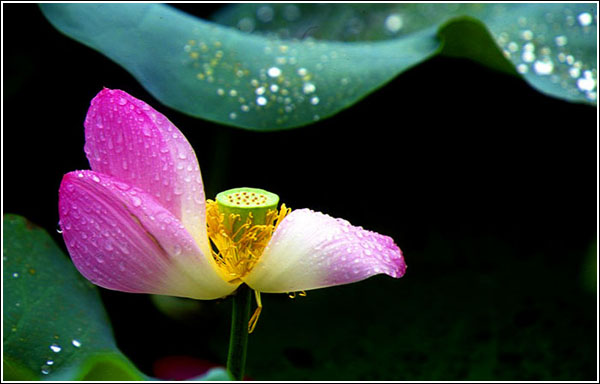
Effect of photosensitive latitude
Figure 4. This is a bicycle placed in the house. It was probably in the afternoon, the lights were not turned on in the house. And the sun shone in from outside the door. In the framing range, the light distribution is extremely uneven and the contrast is relatively large. And the naked eye can clearly see the bicycle tires and the background behind the car.
When shooting, turn on the key of the light meter. After locking the exposure, recompose the shot. Because of the strong reflection in the front, the background is almost pure black. It makes the picture quite concise and highlights the local lines and arcs of the bicycle.
In fact, this is the beauty of photography. Although it reflects the real, but because the film (or CCD, etc.) sensitivity latitude is too narrow, it is not the same as the real one. It can be said that if it is not taken with a camera, such an effect cannot be seen with the naked eye.
Through the understanding of the sensitivity latitude, predict the effect of shooting. And use spot metering, so as to extract this interesting film in the messy and ordinary scene.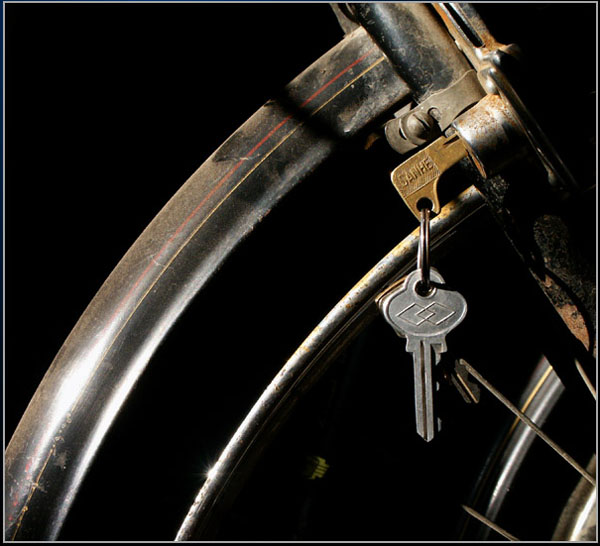
The Importance of Metering for Portraits
Figure 5. Pay attention to metering when shooting people. The most important thing in portrait photography is usually the expression of the human face.
This image was shot using natural light and spot metered the face to expose the face correctly. The surrounding environment and clothing become dark due to underexposure. The picture is simple and the characters stand out, similar to the feeling of using a background cloth in a studio. If the metering is average, the surrounding environment will be clear, and the face will be overexposed and appear pale.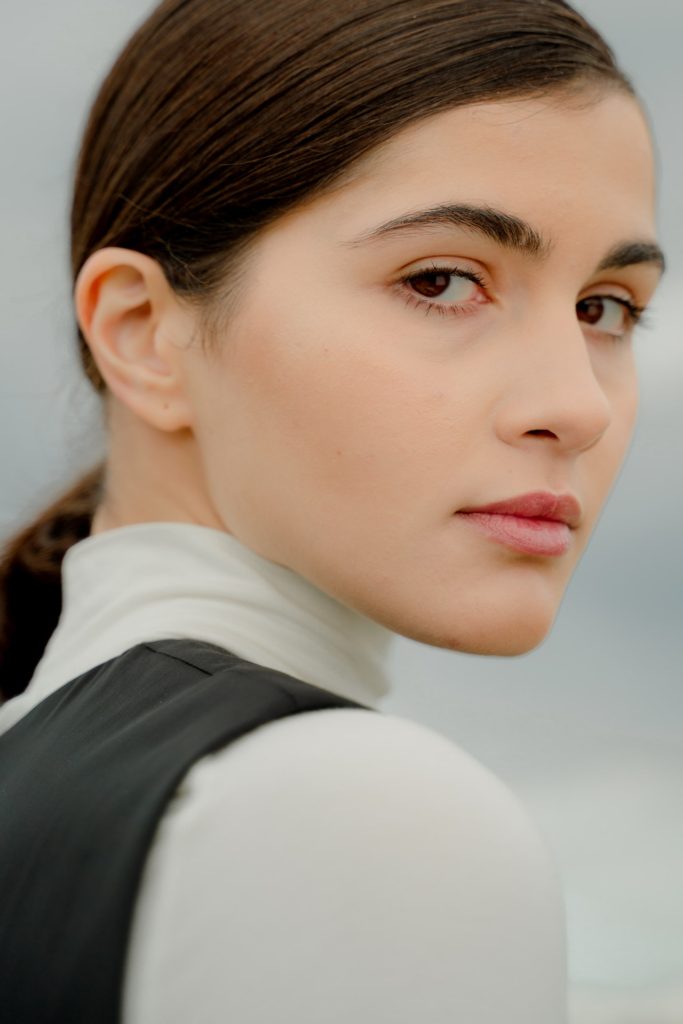
Figure 6. This work was taken during the COVID-19 period. At the entrance of the subway, the reflection of sunlight is strong, the shadows are long. And the surrounding environment is dark, giving people a feeling of unknown and fear. In fact, when shooting, the environment seen by the naked eye is very bright. And the ground that reflects the sunlight is measured as the exposure value. That darkens the surrounding environment and highlights the reflected light and shadows, thus creating this feeling. If you use average metering, you get a film with a normal exposure and brighter surroundings.
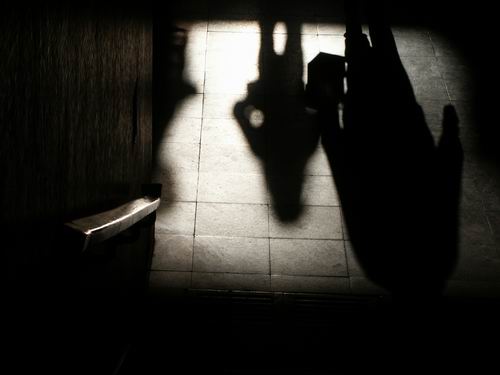
Identification of Several Metering Modes
Reading this article will help beginner photographers:
1. Understand the application of average metering mode, center-weighted metering mode and spot metering mode.
2. Learn how to use exposure lock.
3. Use the “spot metering” method to obtain accurate subject exposure.
Through the understanding and mastery of the above basic knowledge, and then through the actual trial and experience accumulation, I believe that beginner photography friends can also take satisfactory and surprising photos.
